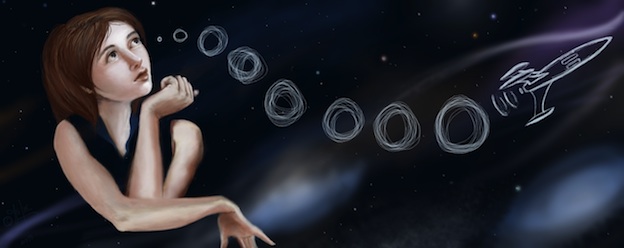Do you have trouble waking up in the morning when your alarm goes off? Me too, but today I don’t feel so bad about it, as it appears I’m in good company. The Rosetta spacecraft got her own alarm call today and it took a little while before she was ready to let the world know she was indeed awake. But there was rejoicing indeed when the ESA operations team in Darmstadt, Germany, received the signal to say she was alive and well.
In case you’re not familiar with the mission, you should watch this rather wonderful animated video to get yourself up to speed with the story so far:
..and so, it was time for Rosetta to come out of 31 months of hibernation – never have so many people stared so tensely at a green line waiting for news.. they waited… and waited…. Then Rosetta “phoned” home and put the minds of her team, worrying like parents of a teenager who has stayed out too late, to rest.
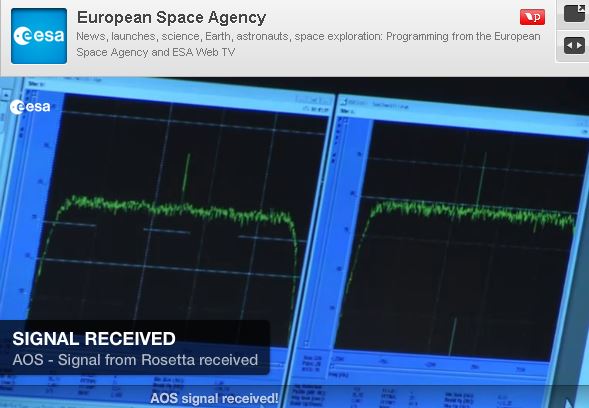
But what will happen in the next chapters of this exciting space tale? If all goes to plan, the story will just get more and more exciting.
First, Rosetta will chase down a comet called 67P/Churyumov–Gerasimenko. Space is big, really big, so even though she’s awake after hibernation, the journey will take until August and will require some rendezvous manoeuvring in May.
When Rosetta gets closer to the comet she’ll buzz around it in orbit, mapping the surface before releasing the precious cargo of Philae, the lander, in November.
Philae will have to complete the tricky task of landing on a comet. It’s never been done before. In fact, no spacecraft has even orbited a comet before, so this is really exciting, new stuff.
There are a couple of problems trying to land on a comet. Firstly, you don’t want to smash into it so hard you damage your instruments, and secondly you don’t want to bounce straight off it. Staying attached is no simple task either, especially when your comet is getting closer to the sun and starting to sublimate. To keep itself in place the Philae lander is going to use two harpoons to anchor itself to the comet and then the science can begin.
It will probe the nucleus of the comet, drilling down into it find out more what it’s made of, doing in-situ analysis of what it finds.
But that’s not all. Rosetta itself will continue orbiting the comet and will collect data on the changes to the comet as it travels around the Sun and back towards the orbit of Jupiter. The mission should last until December 2015.
“Rosetta’s main objective is to help understand the origin and evolution of the Solar System, in particular investigating the role that comets may have played in seeding Earth with water, and perhaps even life” say ESA.
Here’s my friend Dr Mark Bentley talking excitedly about Rosetta with me last year – he’s the Principal Investigator on the Micro-Imaging Dust Analysis System (MIDAS) which is part of the spacecraft. It will study the dust around the comet providing information on particle population, size, volume and shape. His enthusiasm is infectious…
Top Pub Trivia about the Rosetta mission:
- Rosetta’s launch was delayed by over year due to an issue with the Ariane rocket meaning it is now chasing a different comet from the one originally planned.
- Rosetta is so named because it aims to unlock the secrets of the universe, in the same way the Rosetta stone was used to unlock the secrets of Egyptian hieroglyphs.
- The lander, Philae, is named after an an island in the Nile where an obelisk was found that had a bilingual inscription, allowing the hieroglyphics on the Rosetta stone to be deciphered.
- You pronounce Churyumov–Gerasimenko, the target comet’s name, like this: “chu-ree-oom-off / gerr-assy-mienko“
- Rosetta hibernated for 957 days – until today! Hooray!
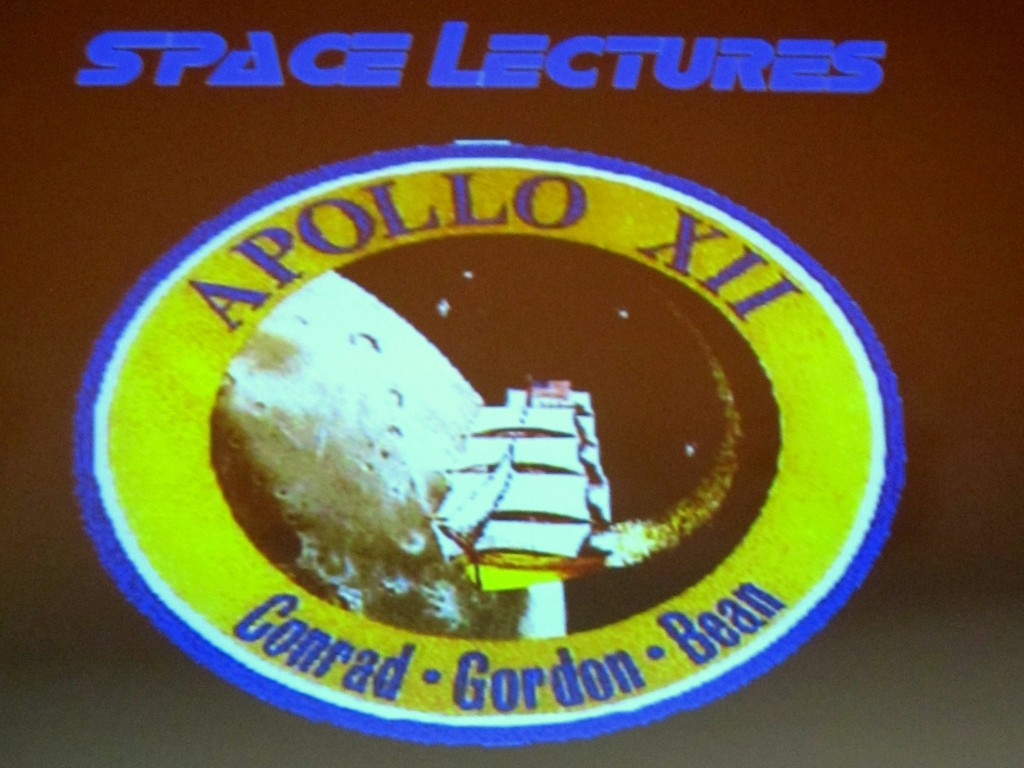
Captain Alan Bean was the fourth of only 12 men ever to walk on the Moon. I was lucky enough to hear him share some of his stories, and speak about the way he is trying to capture his experience through the medium of painting. Here are some of the highlights of the talk he gave in Pontefract on 12th October 2013.
Alan Bean the Artist
Alan Bean went to night school to study art. He was training to be a space shuttle commander at the time, but he decided to give that up, saying that he’d had his chance. He’d gone to the Moon and, in his words, “there were others that could command the shuttle just as well as I could”. Some people thought he was having a mid-life crisis at that point, others thought that art was not a worthy subject, but he continued. “We’re all different, we should preserve that” he says. He speaks passionately about his work, of capturing memories of the Moon in a way no-one else can. I think the stories about his art deserve a post of their own.
Alan Bean the Apollo Astronaut
Getting to the Moon was a job done by 400,000 people, but they were not 400,000 geniuses he says, just 400,000 people that worked together to make it happen. “Every flight to the Moon had to start somewhere; every impossible dream has to start somewhere”.
Test pilots were the ones that had flown things that were as close to being a spaceship as possible. Alan Shepard, John Glenn, Deke Slayton, they all came from that test pilot background before they were astronauts. “I had never done anything impossible before” says Bean, “I had never even tried to do anything impossible before”. When he started, he was worried that everyone was going to be a genius and he’d have a lot to learn from them all. After meeting someone and realising that they were no smarter than he was, he got more worried. If they were like him, and he knew he couldn’t do it, how could going to the Moon be possible?
“I never heard anyone saying we couldn’t do it” says Bean, there was more “wow, that was a mistake we made, we shouldn’t do that again”.
All humans make mistakes he says, “we’re trapped by who we are”, they just had to be willing to pay the price.
Bean said that he knew from calculus at school that he wouldn’t know how to point a rocket at the Moon. Others could, but they can’t fly a spaceship. They all had to work together to make this happen.
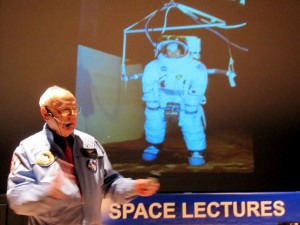 Things didn’t always go smoothly. Bean tells us the story of his suit-testing. In order to check various things they hoisted him up in the air whilst wearing it to see how he could move in it. It was padded, but not enough, and while the suit was held in the air, Bean himself inside it was not. “Owch.” They realised their mistake and tried putting more padding in “it wasn’t enough”. Then they tried filling the suit with water so that he could float inside but “you can’t float standing up”. After various attempts they tried training in water (much like the astronauts do now to train for spacewalks) so that when he got to the Moon, he knew what to do.
Things didn’t always go smoothly. Bean tells us the story of his suit-testing. In order to check various things they hoisted him up in the air whilst wearing it to see how he could move in it. It was padded, but not enough, and while the suit was held in the air, Bean himself inside it was not. “Owch.” They realised their mistake and tried putting more padding in “it wasn’t enough”. Then they tried filling the suit with water so that he could float inside but “you can’t float standing up”. After various attempts they tried training in water (much like the astronauts do now to train for spacewalks) so that when he got to the Moon, he knew what to do.
Alan Bean on the Moon
Bean was asked by his superiors what he thought he was going to do on the Moon. “Put the flag in, collect some rocks, talk to the President, put the TV camera on and see how high we can jump” replied Bean. “That’s what we thought you thought” they said before reminding him that they had to be explorers when they were up there.
The astronauts had to learn about different rocks so that they knew what to look for on the Moon.
“But that’s geology” he grumbled, “maybe you shoulda got geologists and taught them to fly!” After a few days complaining they settled into it. “I’ve probably got a doctorate in geology” says Bean, “I didn’t even want it, but I quite like it now.” They trained in places like Hawaii, where if you covered the ground with two feet of graphite like you get as pencil sharpener dust, it would have been like the Moon.
They thought that they would find craters two billion years old, but they didn’t find that. Instead they found everything was around 3.5 billion years old – as though nothing had really happened to the Moon since then.
“We’d love to find a great big relic, a whole stack of diamonds – something – not just rocks” says Bean. He admits that they considered taking an arrow head up with them as a practical joke, placing it on the Moon in such a way that mission control would see it. He’s glad they didn’t do it though, there are enough people with conspiracy theories and as he says “I love scientists, but they wouldn’t have been amused”. “They probably wouldn’t have let us back in!”
Getting to the Moon
We thought we would lose more crews trying to get to the Moon than we did, says Bean. We have three spare command modules and rockets. “We knew this impossible dream wouldn’t be easy.” Neil Armstrong thought his crew had a 90% chance of getting to the Moon and back, but only a 50% chance of actually landing on it, recalls Bean. Armstrong and Bean shared a secretary at work, and Bean remembers how strange it was that they’d been in the office together “then all of a sudden he turns up on the Moon”.
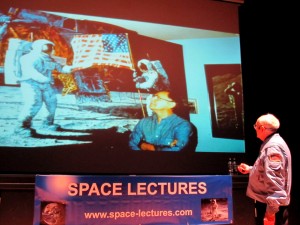 Neil Armstrong confided to Bean that putting the American flag up was one of the scariest moments of the mission. “Why?” asked Bean, apparently Armstrong couldn’t get it deep enough into the Moon and was really worried it might fall over into the dust. He found the centre of gravity for it and carefully balanced it, reportedly saying “as soon as we got it balanced we got away as soon as possible, and we didn’t go near it again”.
Neil Armstrong confided to Bean that putting the American flag up was one of the scariest moments of the mission. “Why?” asked Bean, apparently Armstrong couldn’t get it deep enough into the Moon and was really worried it might fall over into the dust. He found the centre of gravity for it and carefully balanced it, reportedly saying “as soon as we got it balanced we got away as soon as possible, and we didn’t go near it again”.
Originally Bean thought that they would be going to the Sea of Tranquillity like Apollo 11 before them, but they were told that they were going to the Ocean of Storms instead. NASA wanted to prove that they could land near something – Surveyor – but as Bean pointed out with reference to Apollo 11 “we just proved we can’t!”.
They were given an extra two months to find a way to land with pin-point accuracy. The crew and mission control worked on the problem, but the ideas that were first suggested just weren’t working in the simulations. Then someone at the back of a meeting had an idea. They had to find a way to take data from two tracking stations so that they could work out exactly where they were and how fast they were going. That way they could re-programme the computers for landing.
This gave them two problems he says: firstly, there was no way to take information from two places, and secondly “you don’t want to go into the computer when the engine’s burning”. There were no better ideas so as the mission data crept up they were told “you figure out a way to get your data into the computer without screwing up so you hit the Moon”. “That’s the NASA way” quips Bean.
Launching from Earth
“Our rocket” says Bean, referring to the enormous Saturn V that transported him to the Moon, “it was so beautiful”. He speaks of the cryogenic fuel causing ice to build up on the rocket, making it shine. He remembers looking down with pieces of ice falling off “it looked like a breathing animal of some sort – it wasn’t inanimate”. When they launched and it was shaking he wondered if they could keep the rocket together.
“It didn’t look like we were leaving” he says, explaining that it felt like the Earth was leaving them. “It’s leaving us” he thought, and in 10 days time “that thing (Earth) was going to be who knows where”. It was mission control that would have to make the calculations to get them back safely.
He tells us what was going through his head as they were nearing the Moon, “I’m feeling frightened, I can’t do my job when I’m feeling frightened”. He looked back into the module and at the control panels, it looked just like the sim, he felt better. Then he looked back out of the window and back in again, he had to adapt to it.
Just as I’m thinking that this admission of fear is unusual from an astronaut, he comments “I’ve never heard any other astronaut say that”.
Alan Bean on Flying Round the Moon
Bean speaks warmly of his commander saying “Pete Conrad is the best astronaut I ever met”.
Whilst they were up and orbiting the Moon it was Conrad’s job to run the primary computer and Bean was looking after the back-up systems in case they should lose contact with Earth. Here’s the story as Bean tells it (perhaps worth checking out the Apollo 12 transcripts for exact details on the conversation):
Conrad: “It looks like you’re working hard back there”
Bean: “Yes”
Conrad: “But don’t miss the flight. Why don’t you put it down and look out?
As Bean explains to us “He’s my commander, so I did. I looked out of the window”, then came the ultimate question from Conrad. “Al, would you like to fly this thing?”. Conrad explained they could call up a delta V programme and zero things out again to be back on course. Bean knew that mission control was not going to like this, but Conrad had it covered. “Don’t worry, we’re on the dark side of the Moon, they’ll never know”.
You can’t fault the logic and it’s evident Bean still holds this moment dear, “Wow – for someone to think of that – for me…” he says with admiration and humility.
No other commander let their lunar module pilot do that, even when Conrad had told them about the idea.
Any regrets?
When Apollo 14’s Alan Shepard became the first person to hit a golf ball on the Moon Bean asked Conrad “Why didn’t we think of that?”. The answer that came back was simple “we don’t play golf”. Bean thought that they should have done something though, play football perhaps. He can’t go back to correct that in person, but artistic licence has allowed him to imagine the scene in one of his paintings.
“Apollo didn’t do enough things that were fun for humans” says Bean. If we went back, in addition to the science, we should spent 5% of the time doing things that are fun for humans he says. He seems pleased that astronauts on the ISS are finding time to do things like this. He recently met Japanese astronaut Koichi Wakata (who is launching to the station later this year) so let’s hope he passed this message on to him.
Alan Bean on Earth
“When I think of the Earth I think we’re in the garden of Eden” says Bean – joking that it’s even easier to believe that in Pontefract than in Houston!
When the Apollo 12 crew splashed down he thought “Wow – look at that water – so deep and so blue”. They had only been gone 10 days but “we never saw anything going on out there, nothing moved but us three and the spacecraft” he says.
Travelling to the Moon affected him in other ways too: “since I’ve been home I’ve not once complained about the weather – at least we’ve got it” says Bean.
Closing Thoughts
A packed room sat captivated by Bean’s stories, his willingness to share, his art, and his advice (to be covered in a separate post). Going to the Moon is a huge privilege and the great thing is, he knows that. “I feel thankful every day” he says, before leaving us with three wishes:
Light to thy path,
Wind to your sails,
Dreams to thy heart.
We pause for a moment, then applause sweeps across the hall, accompanied by a standing ovation. This man walked on the Moon and there was something very special about hearing all about it first-hand.
Events Space Lectures by .
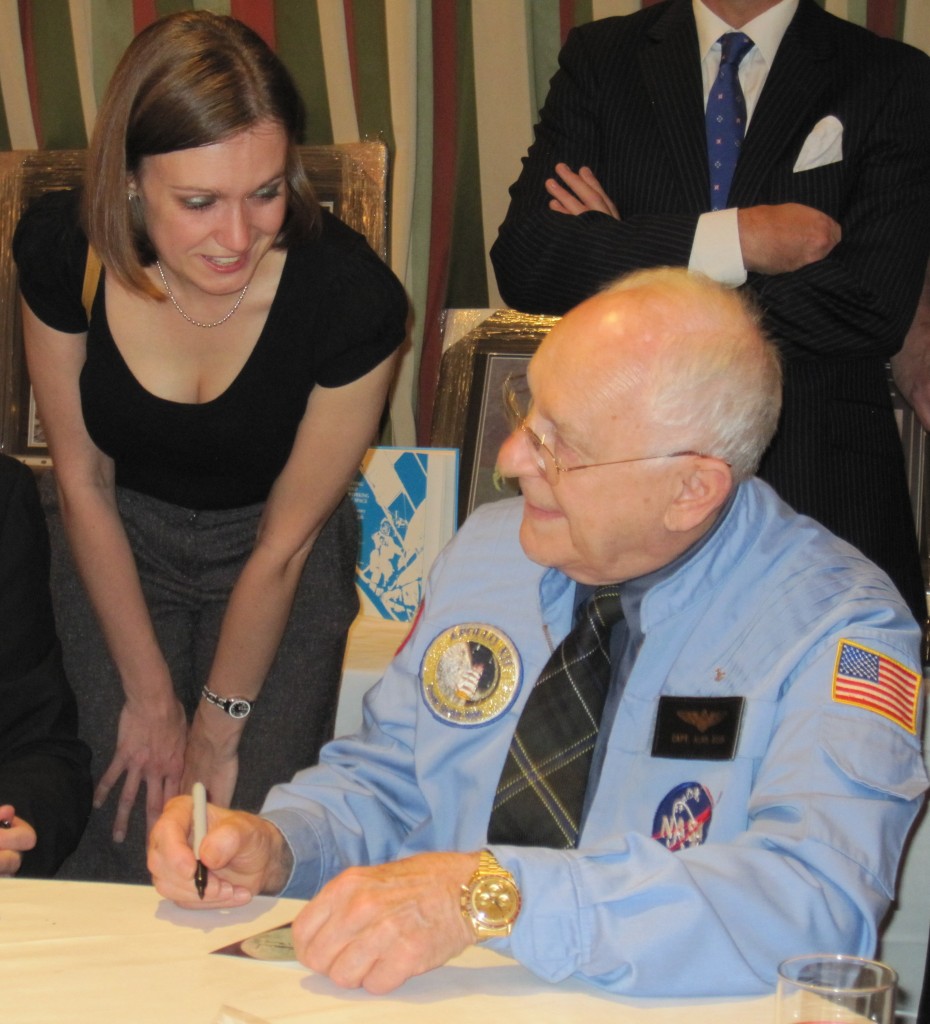
Alan Bean autographs a photo showing the Apollo landing sites
It’s Friday 11th October, 2013. I’m aching from a five and a half hour car journey from central London to Pontefract, but as I stretch my legs and make my way into the hotel, I’m already excited. Tonight I’m having dinner with a man who walked on the Moon.
Okay, so I’ve not got a private audience with him, and it appears that I’ve left my smart dress hanging up in my room in London, but who cares. I’ll be in a room, surrounded by people who love space as much as I do, and at the head table will be Alan Bean, the fourth human so step foot on the Moon. That’s exciting.
So let’s reel back for a moment, how did Apollo 12’s Lunar Module Pilot Alan Bean, come to be having dinner in Pontefract? It’s all thanks to Ken Willoughby, who has made it his mission to get Apollo astronauts to come and talk to children in local schools. In order to fund these visits, he puts on a dinner and a talk for members of the public – and what a delight they are.
We stand and applaud as our special guest enters the room, but fall silent shortly after as he takes a moment to say a few heartfelt words in tribute to Mercury astronaut Scott Carpenter, who sadly passed away the day before.
After this moment of quiet reflection, the buzz returns to the room. There’s a great atmosphere as people connected by a shared love of space swap tales of past events and close encounters with astronauts. Some remember the Moon landings, others wish we’d been alive to experience them first-hand, all of us appreciate their significance.
Alan Bean, Moon walker, explorer artist, says a few words about his morning routine. He’s up at 4.45am every morning, to brush his teeth, do some exercise and then get into his studio to paint. “It’s my duty” he says, “I thought if I could learn to paint well enough I could tell some stories that would otherwise get lost”.
“One of the things I loved about being an astronaut was that you are surrounded by people around you that thought you could do really good things if you were prepared to make a sacrifice”. He spoke of the thousands of people who worked to make the Apollo missions possible. Each of them was committed to doing a good job on their individual piece, even if it were just a tiny screw. They all wanted to be able to say “if anything goes wrong on your flight, it won’t be my part” says Bean.
“It just goes to show you what humans can do if they put their minds to it and are willing to sacrifice”.
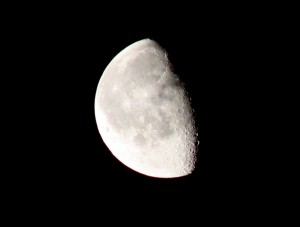
But what of his views on the Moon these days? “I look at the Moon and I think ‘was I ever blessed to be able to go to the Moon’”. There is a hint of sadness in his voice as he follows up saying “the Moon seems further away now than it ever did”. Bean seems almost unsure that it could be possible to go that far, and yet there he is, standing there as living proof that it is.
His footprints on the Moon are testament to that.
If you would like the chance to have dinner with an Apollo astronaut, check out the Space Lectures website and follow @space_lectures on Twitter to get news of their next event.
Events by .
Lynx adverts show their products as having the power to mesmerise and enchant the ladies, instantly drawing them like moths to a flame. They call this “The Lynx Effect”. Today, I confess, I have perhaps been caught under its spell myself.
I’ve spent the day completely absorbed by the idea that the Lynx Space Academy could take me one step closer to space. I know that the odds are stacked against me – not only would I have to beat 249 other people for that chance – but I’d have to do so in a competition created by Lynx, a male grooming brand who’ve made it pretty clear from the start that as a woman, I was not exactly who they were expecting in the competition.
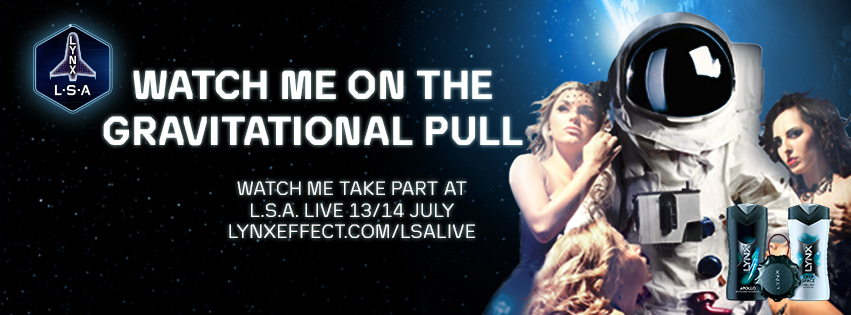
Here’s one of the banners they suggested I use to let you know I’m in the running…
So why did I persist? Why did I stand up to the sexism apparent in their adverts and work to get them to change the global competition rules?
Simple. I really really really want to go to space, but even more importantly, I want to Keep Sexism Out of Space.
In the past month we’ve celebrated the 50th anniversary of the first woman in space (Valentina Tereshkova), the 30th anniversary of the first American woman in space (Sally Ride) and, most excitingly, NASA announced their latest astronaut class which is 50% female – for the first time in history. It’s all so exciting! So positive.
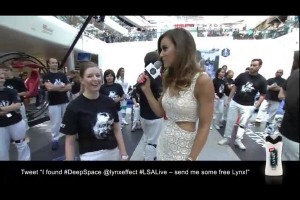 On a smaller scale, the Lynx Astrogrrls have been supporting each other in the Lynx Space Academy Competition from the voting stages – encouraging more women to apply – to this second stage. I cheered for each of them as they dashed through the #LSALive course today and was especially proud of Gillian Finnerty when she was interviewed at the start of the day. She was the first I heard who spoke with genuine passion about going to space. She had it all going for her – the astrophysics, her sporting prowess, her handy rock-climbing hobby – c’mon girl!
On a smaller scale, the Lynx Astrogrrls have been supporting each other in the Lynx Space Academy Competition from the voting stages – encouraging more women to apply – to this second stage. I cheered for each of them as they dashed through the #LSALive course today and was especially proud of Gillian Finnerty when she was interviewed at the start of the day. She was the first I heard who spoke with genuine passion about going to space. She had it all going for her – the astrophysics, her sporting prowess, her handy rock-climbing hobby – c’mon girl!
Sadly it wasn’t enough.
As I watched more of the coverage I started to worry. They kept talking about the 24 people with the best times on the assault course going through to the next round. A drastic cut from 125 down to 24, purely on the basis of the “Launch Pad” trial. It’s a physical trial. We know that there are physical differences between men and women. Nevermind the Olympics, even The Krypton Factor took this into account for their assault course, so surely Lynx would too?
Apparently not. As a result, not one female made it past the first hurdle.
Despite an official statement previously sent to me from Lynx UK which stated:
“As an advertiser we strive to be responsible, the competition adheres to strict internal and external guidelines. Women can enter this competition, if they were to make it through to the second round they would not be at any disadvantage”
I’m not sure that this is the case. (Though of course I look forward to being proved wrong tomorrow.)
I’m quite upset to be honest. I was getting excited about the competition – nervous, hell yeah! – but excited too. I had some incredible support from people on Twitter after my blog post last night explaining just what it would mean to me to win. Even the LynxEffect Twitter account noted it! Now I don’t know what to feel.
I was going to go all out and embrace the Lynx Space Academy – do it for the fun of it, do my best, and really strive to make it through – but now I’m worried. The fastest time any female got today (even on second attempts later in the day which didn’t count) was 42 seconds. The marathon-running female presenter, Charlie Webster had a personal best of 47 seconds. These are great scores, but I’m hearing you had to be sub-35 seconds to get through. If your specially-selected super-fit presenter wouldn’t make it through to the next round surely that rings alarm bells?
I’m struggling to think of a physical activity on a competitive level that doesn’t have different class for men and women. Because we are different!
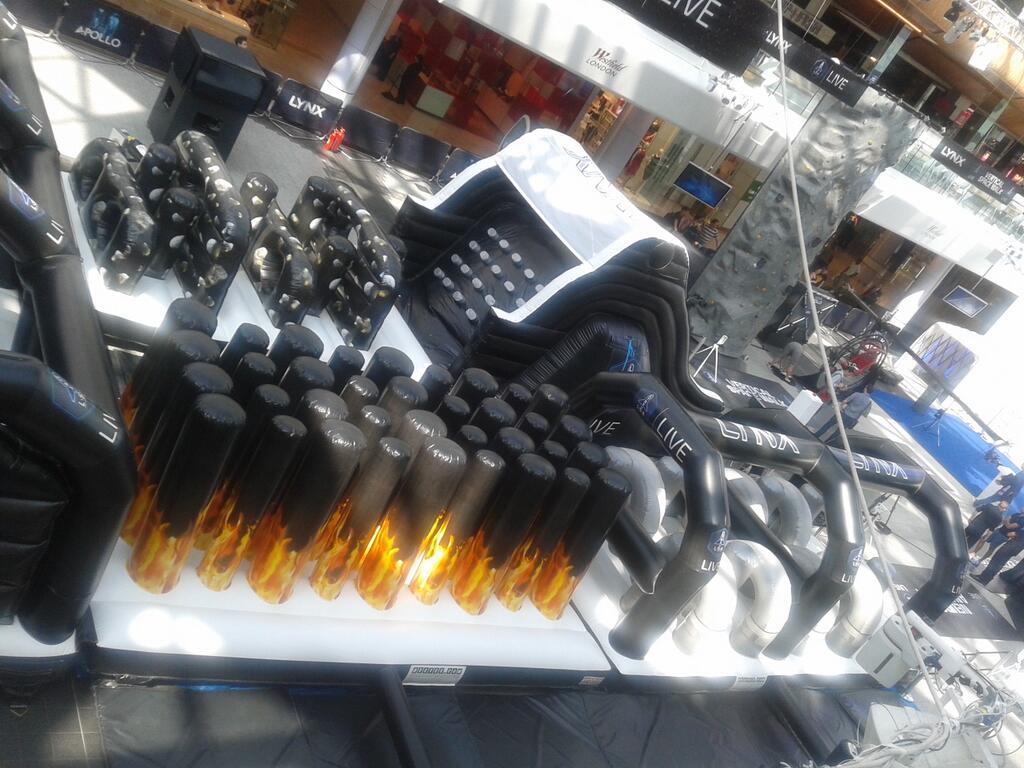
The LSA Live presenters said that the inflatable assault course is the same as one used by the army (though at one point during the day they also stated that Uranus was no longer a planet), so couldn’t they look at the average time for men and the average time for women and just take the difference in time off all the female scores? That would be a simple way to balance things out a bit wouldn’t it?
I want to be excited about tomorrow, I am excited about it, I’m just hoping that Lynx haven’t made the mistake of making this physically impossible for a girl to win.
I still get butterflies thinking about how close I am to my dream… I’d do so much with it. I’d be their PR dream of a story if they let me, and I would share the experience and hopefully inspire other girls to aim for the stars too.
I guess I’ll just do my best, I’ll give it all I’ve got, and I just hope that I do you proud (especially you Granny) – whatever the outcome.
Events Getting to space by .
